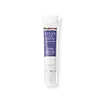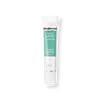What's inside
What's inside
 Key Ingredients
Key Ingredients

 Benefits
Benefits

 Concerns
Concerns

 Ingredients Side-by-side
Ingredients Side-by-side

Water
Skin ConditioningEthylhexyl Stearate
EmollientCyclopentasiloxane
EmollientGlycerin
HumectantSodium Acrylate/Sodium Acryloyldimethyl Taurate Copolymer
Emulsion StabilisingPropylene Glycol
HumectantIsohexadecane
EmollientTocopheryl Acetate
AntioxidantCyperus Esculentus Tuber Extract
Skin ProtectingPolysorbate 80
EmulsifyingSodium PCA
HumectantUrea
BufferingDiglycerin
HumectantHydrolyzed Rice Protein
Skin ConditioningSuperoxide Dismutase
AntioxidantGlycine Soja Protein
EmulsifyingDimethicone Crosspolymer
Emulsion StabilisingCamellia Sinensis Leaf Extract
AntimicrobialSodium Hydroxide
BufferingSorbitol
HumectantHydrolyzed Wheat Protein
Skin ConditioningLysine
Skin ConditioningPCA
HumectantAllantoin
Skin ConditioningLactic Acid
BufferingPhenoxyethanol
PreservativeDiazolidinyl Urea
PreservativeMethylparaben
PreservativeEthylparaben
PreservativeSodium Dextran Sulfate
Gel FormingWater, Ethylhexyl Stearate, Cyclopentasiloxane, Glycerin, Sodium Acrylate/Sodium Acryloyldimethyl Taurate Copolymer, Propylene Glycol, Isohexadecane, Tocopheryl Acetate, Cyperus Esculentus Tuber Extract, Polysorbate 80, Sodium PCA, Urea, Diglycerin, Hydrolyzed Rice Protein, Superoxide Dismutase, Glycine Soja Protein, Dimethicone Crosspolymer, Camellia Sinensis Leaf Extract, Sodium Hydroxide, Sorbitol, Hydrolyzed Wheat Protein, Lysine, PCA, Allantoin, Lactic Acid, Phenoxyethanol, Diazolidinyl Urea, Methylparaben, Ethylparaben, Sodium Dextran Sulfate
Water
Skin ConditioningGlycerin
HumectantSorbitol
HumectantCetearyl Alcohol
EmollientC12-15 Alkyl Benzoate
AntimicrobialDimethicone
EmollientCetearyl Glucoside
EmulsifyingPEG-100 Stearate
Tocopheryl Acetate
AntioxidantPrunus Armeniaca Kernel Oil
MaskingCetearyl Ethylhexanoate
EmollientGlyceryl Stearate
EmollientSodium PCA
HumectantUrea
BufferingCarbomer
Emulsion StabilisingDiglycerin
HumectantAllantoin
Skin ConditioningButyrospermum Parkii Butter
Skin ConditioningPolyacrylamide
Sodium Hydroxide
BufferingC13-14 Isoparaffin
EmollientDisodium EDTA
PEG-8
HumectantPCA
HumectantLactic Acid
BufferingHydrolyzed Wheat Protein
Skin ConditioningLysine
Skin ConditioningLaureth-7
EmulsifyingTocopherol
AntioxidantAscorbyl Palmitate
AntioxidantAscorbic Acid
AntioxidantCitric Acid
BufferingPhenoxyethanol
PreservativeEthylhexylglycerin
Skin ConditioningDiazolidinyl Urea
PreservativeWater, Glycerin, Sorbitol, Cetearyl Alcohol, C12-15 Alkyl Benzoate, Dimethicone, Cetearyl Glucoside, PEG-100 Stearate, Tocopheryl Acetate, Prunus Armeniaca Kernel Oil, Cetearyl Ethylhexanoate, Glyceryl Stearate, Sodium PCA, Urea, Carbomer, Diglycerin, Allantoin, Butyrospermum Parkii Butter, Polyacrylamide, Sodium Hydroxide, C13-14 Isoparaffin, Disodium EDTA, PEG-8, PCA, Lactic Acid, Hydrolyzed Wheat Protein, Lysine, Laureth-7, Tocopherol, Ascorbyl Palmitate, Ascorbic Acid, Citric Acid, Phenoxyethanol, Ethylhexylglycerin, Diazolidinyl Urea
Ingredients Explained
These ingredients are found in both products.
Ingredients higher up in an ingredient list are typically present in a larger amount.
Allantoin is a soothing ingredient known for its protective and moisturizingg properties. Because of this, it is often added to products with strong active ingredients.
Studies show higher concentrations of this ingredient can promote wound healing.
Though it can be derived from the comfrey plant, allantoin is produced synthetically for cosmetic products to ensure purity.
Learn more about AllantoinDiazolidinyl Urea is an antimicrobial preservative. It is commonly used to prevent bacterial, yeast, and mold growth.
Diazolidinyl Urea slowly breaks down into formaldehyde, an effective microbe killer but also a known allergen/carcinogen.
Some people who are allergic to imidazolidinyl urea also react to diazolidinyl urea. It ranked as the 14th most common allergen in patch tests from 2005–06.
Safety reviews show that at concentrations under 0.5%, the formaldehyde released remains below the accepted safety limit, making it considered safe for cosmetic use.
Ultimately, its safety depends on individual skin sensitivity and personal comfort with formaldehyde-releasing preservatives.
Learn more about Diazolidinyl UreaDiglycerin is a humectant. It is derived from glycerin, which is naturally found in your skin.
As a humectant, it helps draw moisture to the skin from the air.
Glycerin is already naturally found in your skin. It helps moisturize and protect your skin.
A study from 2016 found glycerin to be more effective as a humectant than AHAs and hyaluronic acid.
As a humectant, it helps the skin stay hydrated by pulling moisture to your skin. The low molecular weight of glycerin allows it to pull moisture into the deeper layers of your skin.
Hydrated skin improves your skin barrier; Your skin barrier helps protect against irritants and bacteria.
Glycerin has also been found to have antimicrobial and antiviral properties. Due to these properties, glycerin is often used in wound and burn treatments.
In cosmetics, glycerin is usually derived from plants such as soybean or palm. However, it can also be sourced from animals, such as tallow or animal fat.
This ingredient is organic, colorless, odorless, and non-toxic.
Glycerin is the name for this ingredient in American English. British English uses Glycerol/Glycerine.
Learn more about GlycerinWe don't have a description for Hydrolyzed Wheat Protein yet.
Lactic Acid is another well-loved alpha hydroxy acid (AHA). It is gentler than glycolic acid but still highly effective.
Its main role is to exfoliate the surface of the skin by loosening the “glue” that holds dead skin cells together. Shedding those old cells leads to smoother, softer, and more even-toned skin.
Because lactic acid molecules are larger than glycolic acid, they don’t penetrate as deeply. This means they’re less likely to sting or irritate, making it a great choice for beginners or those with sensitive skin.
Like glycolic acid, it can:
Lactic acid also acts as a humectant (like hyaluronic acid). It can draw water into the skin to improve hydration and also plays a role in the skin's natural moisturizing factor (NMF) in the form of sodium lactate.
Studies show it can boost ceramide production to strengthen the skin barrier and even help balance the skin’s microbiome.
To get results, choose products with a pH between 3-4.
Lower strengths (5-12%) focus on surface exfoliation; higher strengths (12% and up) can reach deeper in the dermis (deeper, supportive layer) to improve skin texture and firmness over time.
Though it was originally derived from milk, most modern lactic acid used in skincare is vegan. It is made through non-dairy fermentation to create a bio-identical and stable form suitable for all formulations.
When lactic acid shows up near the end of an ingredient list, it usually means the brand added just a tiny amount to adjust the product’s pH.
Legend has it that Cleopatra used to bathe in sour milk to help reduce wrinkles.
Lactic acid is truly a gentle multitasker: it exfoliates, hydrates, strengthens, and brightens. It's a great ingredient for giving your skin a smooth, glowing, and healthy look without the harshness of stronger acids.
Read more about some other popular AHA's here:
Learn more about Lactic AcidLysine is an essential amino acid. Your body is unable to produce it naturally and we mainly get lysine from food sources.
Our bodies use lysine for growth and tissue repair. The skin uses amino acids as a precursor for building protein, and therefore keratins, collagen and elastin.
PCA is derived from amino acids and is naturally found in our skin's barrier.
As a humectant, PCA helps draw and hold moisture to the skin. Studies show it is effective at helping the skin stay hydrated long-term.
Phenoxyethanol is a preservative that has germicide, antimicrobial, and aromatic properties. Studies show that phenoxyethanol can prevent microbial growth. By itself, it has a scent that is similar to that of a rose.
It's often used in formulations along with Caprylyl Glycol to preserve the shelf life of products.
Sodium Hydroxide is also known as lye or caustic soda. It is used to adjust the pH of products; many ingredients require a specific pH to be effective.
In small amounts, sodium hydroxide is considered safe to use. However, large amounts may cause chemical burns due to its high alkaline.
Your skin has a natural pH and acid mantle. This acid mantle helps prevent harmful bacteria from breaking through. The acid mantle also helps keep your skin hydrated.
"Alkaline" refers to a high pH level. A low pH level would be considered acidic.
Learn more about Sodium HydroxideSodium PCA is the sodium salt of pyroglutamic acid. It is naturally occurring in our skin's natural moisturizing factors where it works to maintain hydration.
The PCA stands for pyrrolidone carboxylic acid, a natural amino acid derivative.
This ingredient has skin conditioning, anti-inflammatory, and humectant properties. Humectants help hydrate your skin by drawing moisture from the air. This helps keep your skin moisturized.
Learn more about Sodium PCASorbitol is a sugar alcohol. It is a hydrating and moisturizing agent created from the reduction process of glucose.
Most sorbitol is usually made from potato starch. It is also found in fruits such as apples and pears.
As a humectant, Sorbitol helps draw water to the skin. This helps keep the skin hydrated. Sorbitol also helps create a thicker texture in products. You might find sorbitol in your toothpaste and other gels.
It is a non-irritating ingredient that is great for those with dry skin.
Sorbitol is a prebiotic. It helps promote the growth of healthy bacteria on your skin. The bacteria on your skin form a microbiome. This microbiome helps protect your skin from infection and harmful bacteria.
Learn more about SorbitolTocopheryl Acetate is AKA Vitamin E. It is an antioxidant and protects your skin from free radicals. Free radicals damage the skin by breaking down collagen.
One study found using Tocopheryl Acetate with Vitamin C decreased the number of sunburned cells.
Tocopheryl Acetate is commonly found in both skincare and dietary supplements.
Learn more about Tocopheryl AcetateUrea is also called carbamide and is the diamide of carbonic acid. In cosmetics, urea is used to hydrate the skin. It also provides exfoliation in higher concentrations.
As a humectant, urea helps draw moisture from the air and from deep within the skin. This helps hydrate your skin. Studies show urea is an effective moisturizer for dry skin conditions. 40% urea is typical in medications for treating eczema and other skin conditions.
Urea has the strongest exfoliation effect in concentrations higher than 10%. It is a keratolytic agent, meaning it breaks down the keratin protein in the top layer of skin. This helps remove dead skin cells and flaking skin.
In medicine, urea has been shown to help increase the potency of other ingredients, such as fungal treatments.
Humans and animals use urea to metabolize nitrogen-containing compounds. Urea is highly soluble in water. Once dissolved, it is neither acidic nor alkaline.
Learn more about UreaWater. It's the most common cosmetic ingredient of all. You'll usually see it at the top of ingredient lists, meaning that it makes up the largest part of the product.
So why is it so popular? Water most often acts as a solvent - this means that it helps dissolve other ingredients into the formulation.
You'll also recognize water as that liquid we all need to stay alive. If you see this, drink a glass of water. Stay hydrated!
Learn more about Water